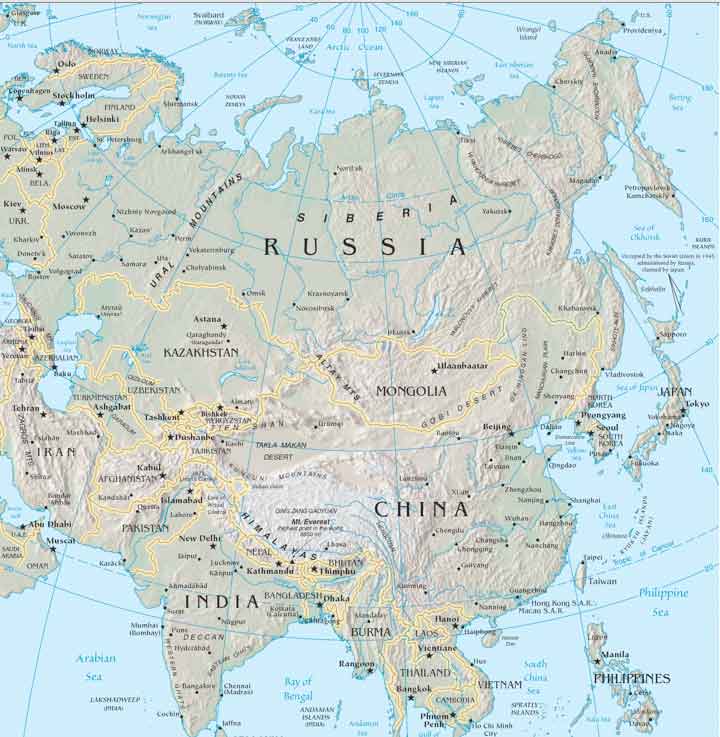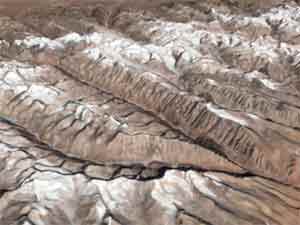“Nature is the time keeper. It is nature that determines the tipping points beyond which change becomes irreversible. Unfortunately we can’t see the clocks so we don’t know much time is left” —Journey to Planet Earth, 2011
As a society, what if we fail to recognize a clear and present danger that requires our immediate and full engagement? What if Plan A—the world’s business as usual—must no longer continue on its present trajectory? What if we fail to respond in time because we are unable to muster the will against a force we can’t directly measure, or clearly see coming, and that is outside our human experience?
If history serves as any guide, from ancient civilizations that suddenly collapsed, our fate may rest upon the collective will to trust our advanced scientific prowess, and individual human strengths, to accurately decipher out of the earth’s daily signals, that an ominous pattern is unfolding. For some have come to believe that time is of the essence to act, and that we do not have the luxury of waiting until the signals become visibly obvious. For then, it will be too late.
In a nutshell, that’s the message that Lester R. Brown, scientist, visionary, and environmental writer spells out in his recent book, and now a PBS film with the same title: Plan B: Mobilizing to Save Civilization available for online viewing (the first 20 minutes) below. (Video no longer available for viewing here)
As Plan B begins, the viewer learns that sea ice in the Arctic region has been melting at an astonishing rate in recent years. In a 1 week period of time alone, a mass of ice the size of the United Kingdom has melted away. But it is in the mountains of Asia, the glaciers in the Himelayas and the Tibetan Plateau where the effects of climate change are most apparent, and worrisome to some scientists. As these glaciers continue to recede, they are the principal source for feeding the major rivers of Asia during the dry season that run through China, India, and other neighboring countries. The Indus, Ganges, Yellow River, and Yangtse provide the necessary sources of fresh, irrigation water for food production to feed 400 million people.
“We are tied together in ways we never imagined before”, Lester Brown informs us. Indeed, one of the major themes running through this movie, the Earth is a system of highly interrelated systems, when climate change effects one region of the world, it also effects the climate systems throughout the world. And, it is climate change that draws Brown to question the future viability of the world’s Plan A, and the urgent call for a major course correction.
We learn that most civilizations that collapsed in the past did so because of a major reduction in their food supply. Brown theorizes that food may be the weak link that as more and more failed states arise, the tipping point between natural and political events leads to the collapse of human civilization; in such a collapse, a loss of 90% of humanity would likely result.
Climate change makes food production throughout the world more precarious, and lowers food supply levels. Today, the world’s food supply is at the lowest level in 45 years. For example, China now accounts for 1/4 of all the meat consumption in the world. As population continues to grow, more people in the developing world will move up the food chain ladder. In the film, scientists estimate that by 2020, there will be an additional 3 billion+ new people consuming meat. That places tremendous pressures on grain production, not only for human consumption, but also to feed the growing populations of added livestock populations. According to Brown, it’s not sustainable. It also places unbearable strain on western food supplies, especially US grain, fueling higher domestic food prices, and around the world. Poorer nations will have to do with less food, and this too will put pressure on governments to address the needs of their people, or like Chad, Sudan, Haiti, and other countries mentioned in the film—be added to the growing list of failed states.
The film outlines 3 competing trends that will increasingly vie for the world’s available food supplies:
Population Growth (current growth is 70 million per year)
Rising levels of affluence- more people move up the food chain ladder
Massive diversion of grain to fuel cars- the amount of grain to fuel a 25 gallon SUV is the amount of grain that could feed one person for a year.
One particularly moving portion of the film, Brown recounts an event in recent history that demonstrates the incredible resolve that Americans have shown under challenging circumstances. Pearl Harbor had just been bombed during WWII, and America had to face Japan, then the largest industrial force in the world. In order to effectively respond, President Roosevelt turned to the automotive industry, and summoned their energy and direction to do something that never had been done before—almost overnight—switch from automobile production to a massive production of wartime equipment: tanks, airplanes, ships, etc., which also meant, no new car manufacturing would take take place during those 2 years needed for factory production. In a matter of weeks and months, America responded.
This is the outline Brown presents for his plan B needed to restructure the global economy:
Cut CO2 emissions 80% by 2020
Stabilize population growth to 8 billion people-through a mixture of education, and economic opportunties
Eradicate poverty
Restore the world’s natural living systems
Will we come to recognize the threat in time, and be able to respond appropriately? That’s what makes this film so important to watch, to ponder, and to decide what each of us as individuals will do. If we get this wrong, and Lester Brown’s warning proves prophetic, no more pages will turn for our children.
And, it would be on our watch…
This post was written by Fred Gerendasy, a contributor to Cooking Up a Story as a writer and occasional interviewer. His current work is featured at Fred Gerendasy Photography.


